I absolutely love long exposure night time photography, for me its a far more spiritual mindful time to shoot and that element of doubt and anticipation of just what you are going to get is heightened. To me that’s film photography in a nutshell, that nagging doubt and anticipation then reward rather than instant gratification and certainty that comes with digital.
My first ever roll of film at night having followed the hype was Cinestll 800 T on 35mm. The shots were ok but nothing to write home about. Black and white is more my thing and as soon as I progressed into medium format I found myself heading out after dark with my Hasselblad 500 CM loaded with HP5, a year later I disappeared into the rabbit hole of large format and invested in a Chamonix 4×5. Buying a new format camera is rather like buying a new fishing rod. The rod arrives and then you realise you need a new reel ,some line ,some bait , that added expense is overlooked when you click ‘ Buy now “. I am by no means a master or expert but my method does seem to work (so far ) I certainly wouldn’t advise shooting 45 straight away but give it a few rolls of 120 and keep good notes and you should be ready to go big, should you wish.
Subject matter and focusing
If you can find a nice solid light source, a neon sign , a street lamp or a well lit building then focusing isn’t that hard, even with my terrible eye sight. Wider angle lenses certainly make life easier with improved depth of field and dare I say a decent amount of dead space you can crop if required. Thats how I started, always looking for man made structures to lock onto. The 60mm on the Hasselblad is a no brainer, just focus on infinity swivel back 2mm on the focus ring and Im happy to go for it, 4×5 is in some ways harder as any truly dark shadow areas will almost impossible to see on the ground glass. I am not going to lie, sometimes I am shooting into darkness, semi-blind and just hoping for the best! I always carry a big torch and if I want to critical focus anything in the foreground I will either illuminate it with a torch while I will focus or place my torch in the photo, focus on the torch itself then remove the torch once I am ready to expose the film. The other method with 45 is to measure out infinity focus and mark it on the camera ,then simply position the front standard at the right measurement. I still prefer it if I can find something solid to focus on
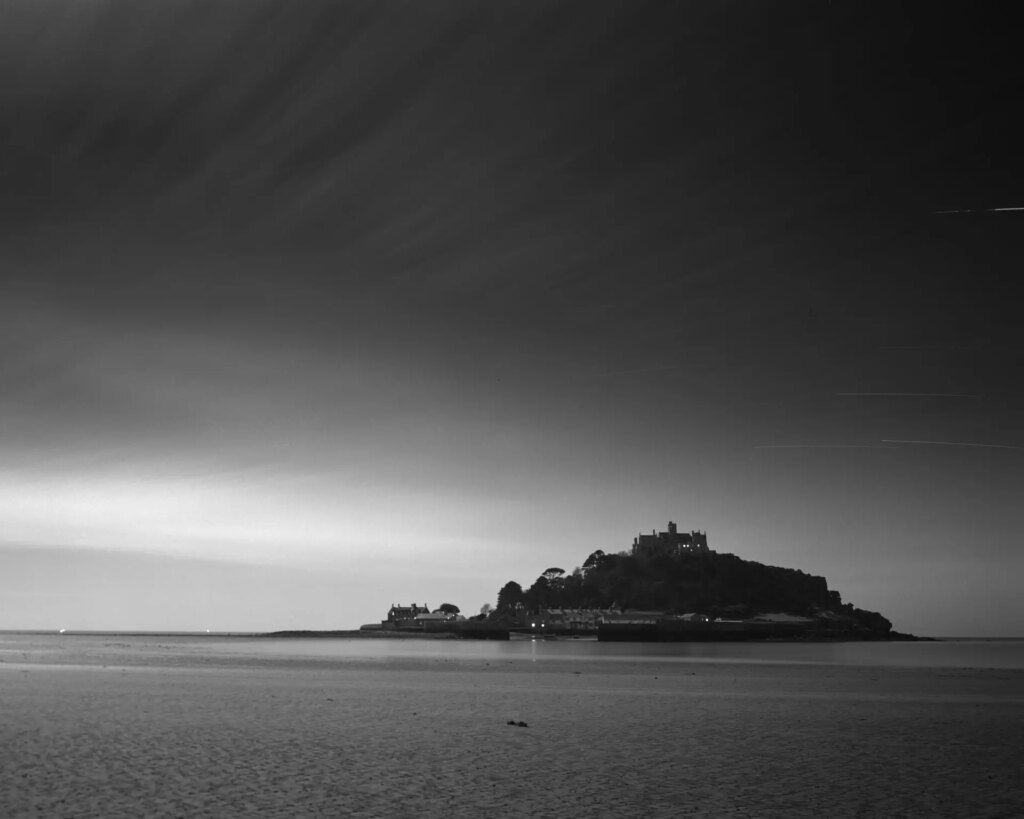
Full moon
Over time I have started to wish for something more natural from my night shots . I shoot a lot of surf and seascapes and I live next to the beach. Theres nothing more magical than a full moon reflecting across the sea on a calm night . So recently I have been striving for something more ethereal and minimalist . This winter I marked the full moon cycles on my diary . I watch the weather and wait for my chance then I go for it, winter is obviously a great time of year as you can shoot some film and still be home before 9 pm
I generally shoot at f/8 or f/11 . A full moon will be 40 minute exposure and f/11 an hour (ish) if I don’t have man made lights to illuminate the scene.
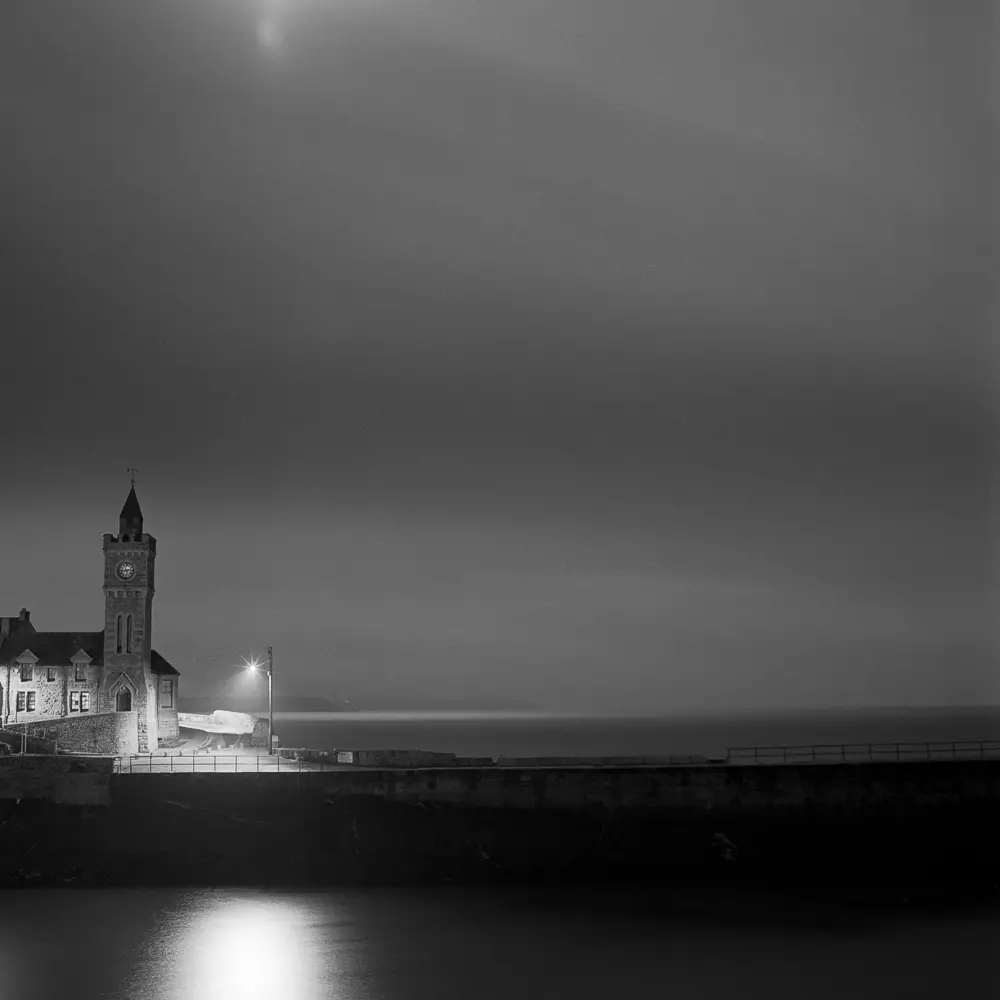
For scenes with street lights on a full moon I have found anything between 1 minute and 3 mins will give you plenty of information one a negative. See my notes on bracketing below. I don’t meter shots anymore. I have used an iPhone light meter AP at times and added a stop of light for good measure.
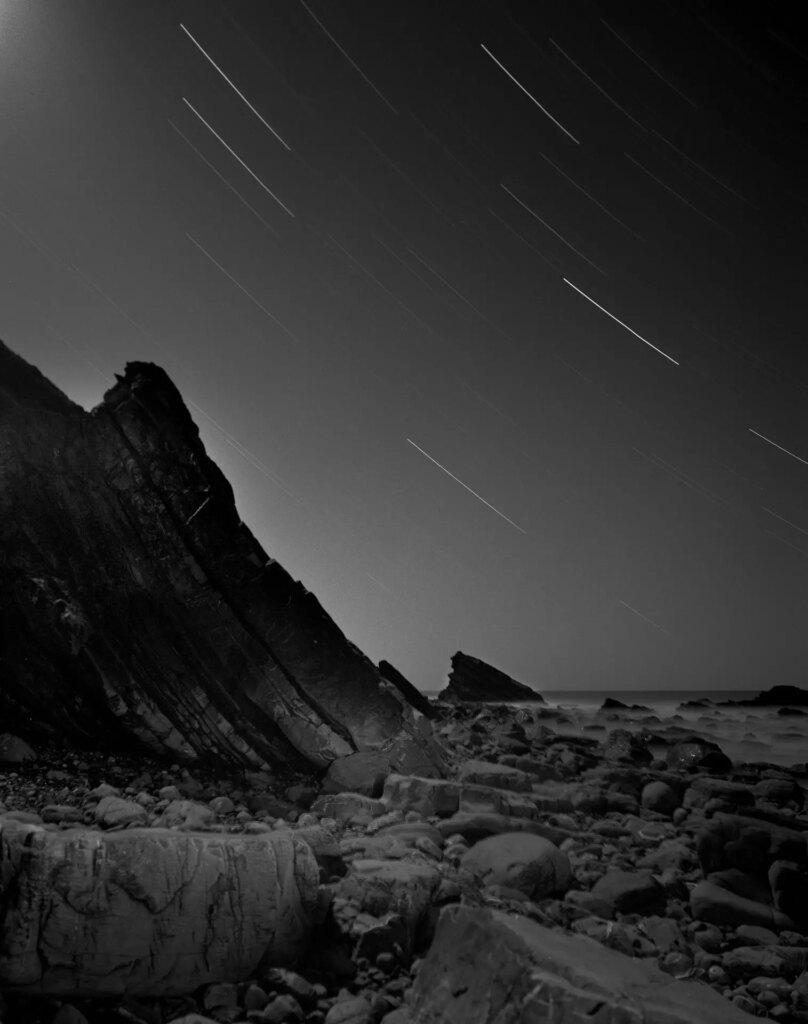
Half moon
I like the mixture of star trails and the tones and detail provided by the moon and my torch. This was backlit by the moon. I flashed the foreground with my torch for 20 seconds, just the same way that you would burn in shadow detail on an enlarger in the darkroom, keeping the light moving to avoid over burning in one spot.
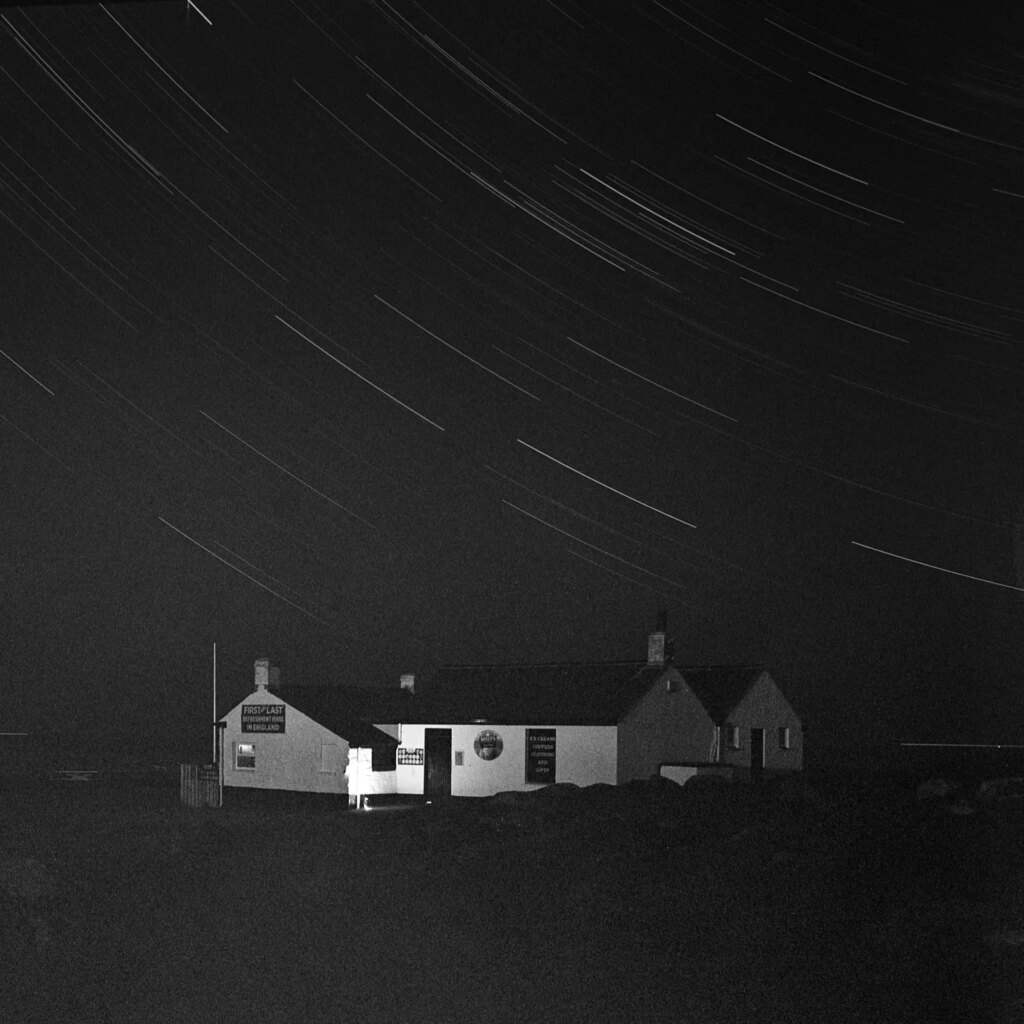
No Moon
I haven’t shot that much with no moon as Im not a fan of the mega star trail images that you commonly see at night. A full moon or half moon gives me the look I enjoy. If and when I have done the dark shots with no moon then I shoot 40 mins f/8 to 1.5 hours f/8, I quite like the short broken star trails that 40 – 60 mins renders. For this shot I left my iPhone on the ground in front of the building with the torch light on facing up, it was the only way I could compose as it was otherwise impossible. I then walked back to the camera, began the exposure then walked back to the phone and switched it off. I’m guessing the light was shining for 20 seconds? Luckily I was wearing all black clothes. I’m not sure what you would see if I had been wearing a white boiler suit, perish the thought of that any time of the day!
Film Choice, Metering and Development
I always use Ilford HP5 and I develop my film at 800 development times. I now always use 510 Pyro developer. Once I switched to this staining developer my highlights became manageable and less likely to explode. The standard Dev time for 510 @ 800 HP5 is 28 Minutes. Agitate for the first minute then 3 inversions per minute thereafter, water stop bath then Alkaline fix for 6 mins. If I shoot scenes with bright highlights from artificial lighting then I drop my development time down to 25/26 mins.
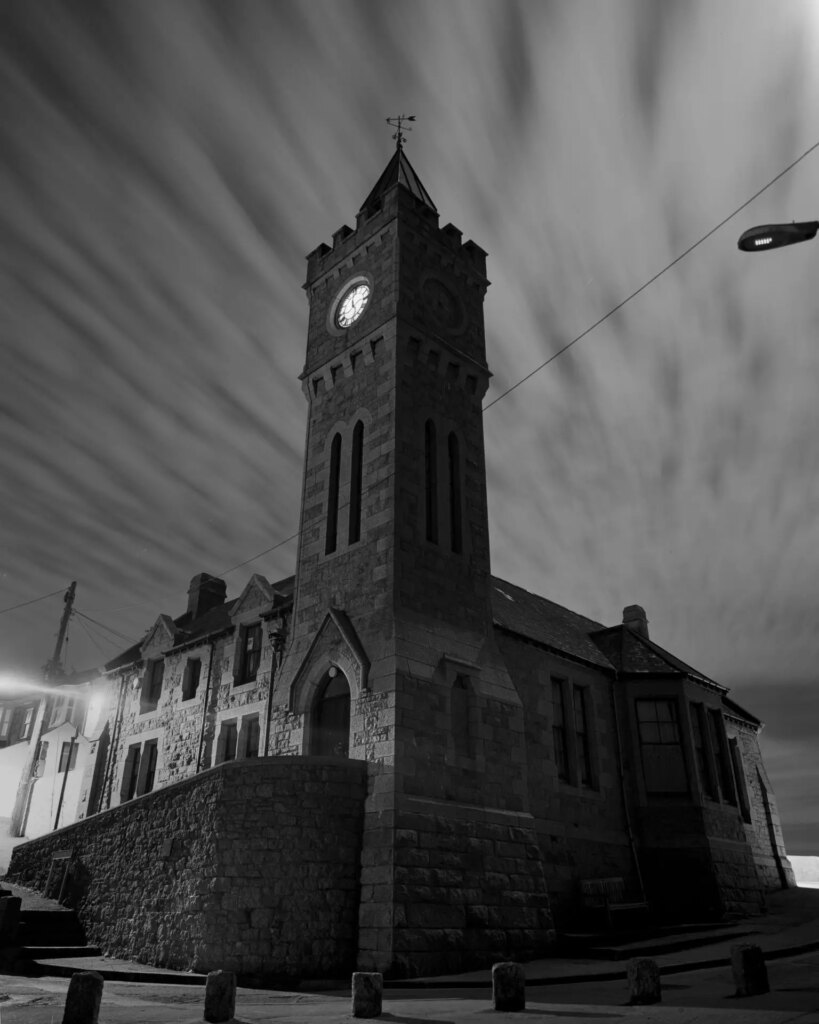
Keeping notes
Having kept notes in the past I just took an educated guess on the shot above and I was delighted with the result I just look at a scene and take a punt. f/8, 3mins did the job, the detail and tones you get at night continue to amaze me. focusing on this building was quite easy and I even managed to get a couple of slight front standard movements in. I just focused on the clock.
Bracketing
Bracketing my shots has been quite an eye opener, what I am trying to convey is that with HP5 the way I use it seems that there is almost no limit to how much information the negative will pick up if you give it enough exposure and also how similar the negatives are. I am yet to see a negative and say “oh balls I’ve completely over exposed it” I have shot at 60 – 90 – 180 seconds and the difference between the negatives is negligible.
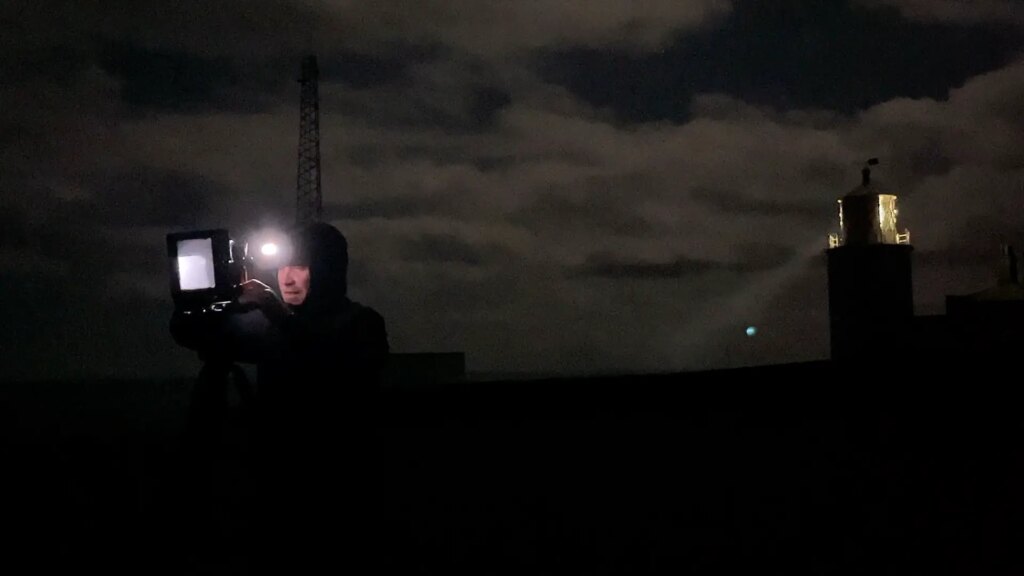
The hardest part of night Photography for me is walking away from a warm cosy home, going out the front door and standing next to a camera for 40 mins on a cold winters night .
Thanks for reading
Austen Goldsmith – Porthleven, Cornwall, UK
https://www.austengoldsmith.com
Insta @grainy_waves
Share this post:
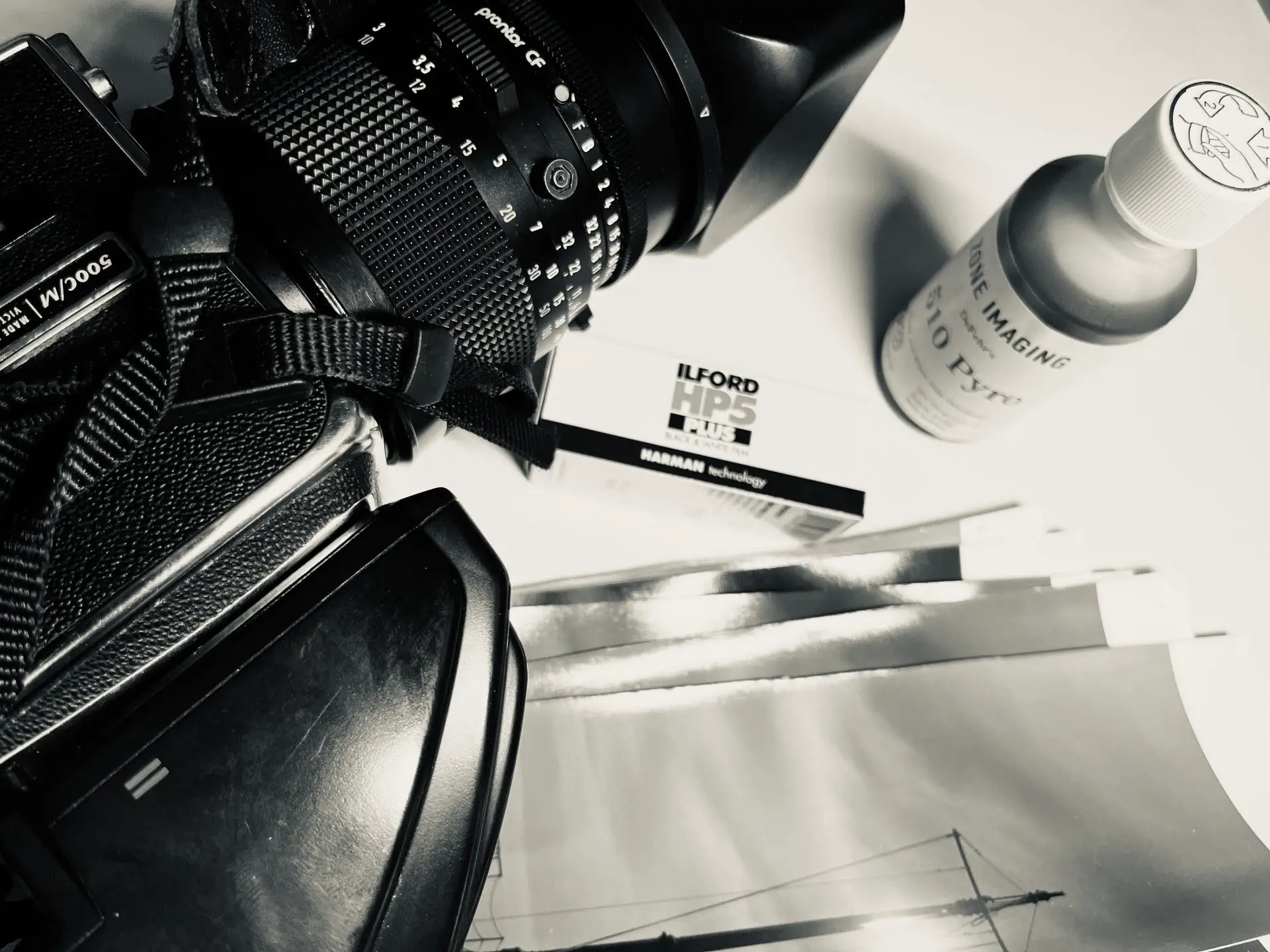








Comments
Stala Gavrielides on Shooting f/8 Until Sunrise – My Experiences and Methods
Comment posted: 11/05/2023
Thanks for sharing!
Kind regards,
Stala
Safiyyah on Shooting f/8 Until Sunrise – My Experiences and Methods
Comment posted: 11/05/2023
Comment posted: 11/05/2023
Bob Janes on Shooting f/8 Until Sunrise – My Experiences and Methods
Comment posted: 11/05/2023
Have you tried stand development for this type of shot?
Comment posted: 11/05/2023
John Feole on Shooting f/8 Until Sunrise – My Experiences and Methods
Comment posted: 11/05/2023
Comment posted: 11/05/2023
DANIEL J CASTELLI on Shooting f/8 Until Sunrise – My Experiences and Methods
Comment posted: 11/05/2023
Your article and photos were published with perfect timing. You have a good eye and your compositions are excellent. You've mastered your technique.
There's a large commercial building in the industrial area of our town. It has a huge American flag painted on the side of the building. At night, it's illuminated by powerful spotlights. I contacted the owner and obtained permission to photograph it at dusk. The night will help disguise the clutter surrounding the building.
I've printed out your article and will use it as guide to create this photo. My advantage is I can revisit the site until I get the results I want. Thanks for doing the 'leg work'!
Dan
Comment posted: 11/05/2023
MIchael on Shooting f/8 Until Sunrise – My Experiences and Methods
Comment posted: 11/05/2023
Comment posted: 11/05/2023
Ibraar Hussain on Shooting f/8 Until Sunrise – My Experiences and Methods
Comment posted: 13/05/2023
Really enjoyed the write up and the fantastic photos
Comment posted: 13/05/2023